As a beginner, I often wondered why our chess coach made us write down the moves. Sometimes, I assumed because it was a part of the chess classes, as we were kids.
Later, when I began to watch the previous matches, especially the Chess World Championships, I was shocked.
The chess grandmasters and the super grandmasters were writing down the notes just like we did in our chess training. Remember the chess match between the 22-year-old Magnus Carlsen and then reigning champion Vishwanathan Anand in 2013?
What do Chess Players Write Down When They Play?
Chess players record their moves on a scoresheet using Algebraic Notation. For example, if White plays a pawn to d4 and Black plays a pawn to f4, the moves are written in their respective columns.
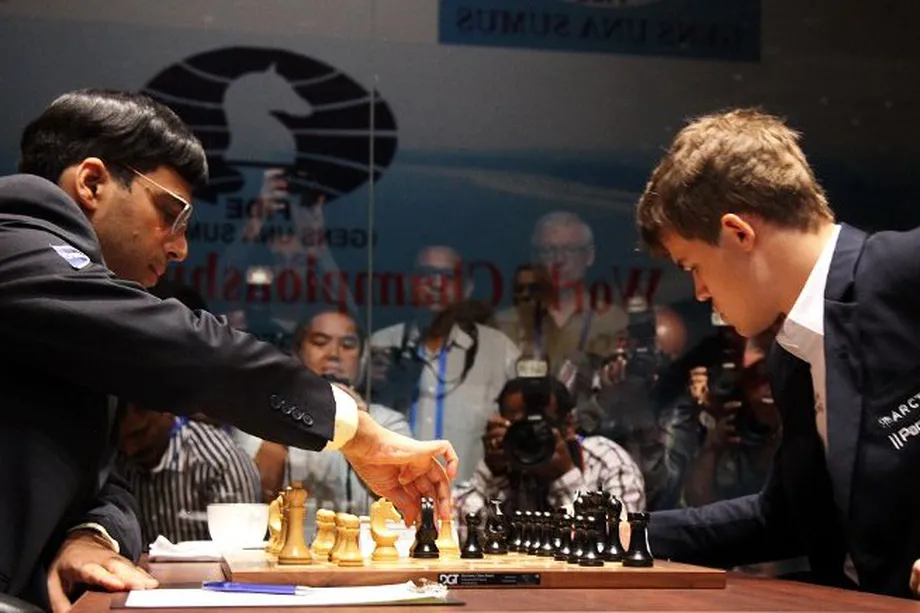
I first noticed this during the 2013 World Chess Championship in Chennai, India, where Carlsen was making history. Watching Anand meticulously record his moves taught me the reason behind it: in official games, writing down moves is mandatory. It ensures accuracy, helps review games, and maintains the official record of the match.
1. What is a Scoresheet?
A scoresheet in a chess game is an official paper given to both the players to record their moves. Basically, it's a plain piece of paper with two columns for Black and White.
Player 2's moves will go in the column dedicated to Black, and similarly, player 1's moves are recorded in the column dedicated to White. Overall, a scoresheet in a chess match is like the players' personal testimonials about the match. You will need to show the scoresheet before claiming anything about the match.
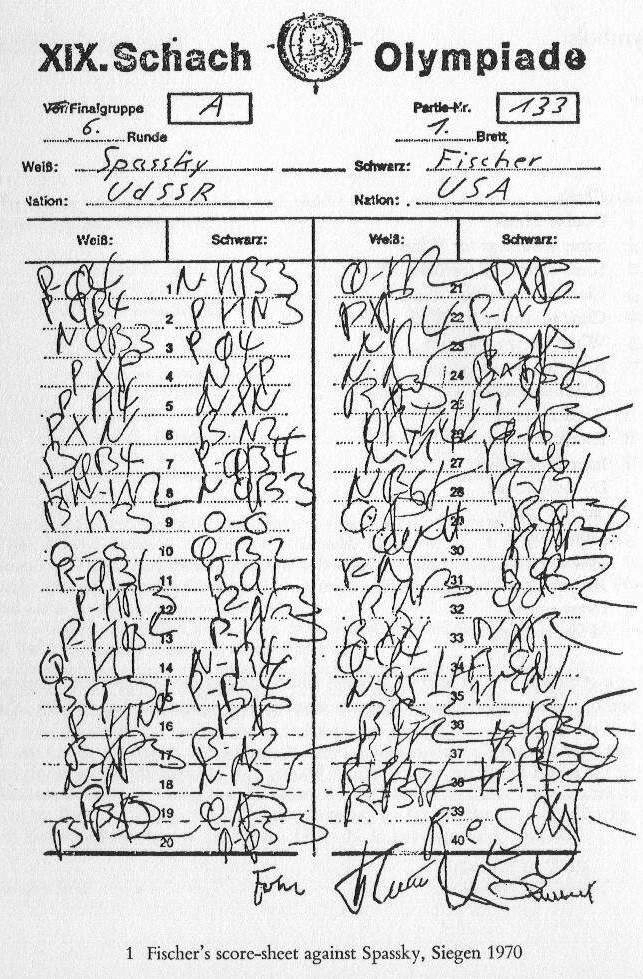
In the above picture, you're looking at the notes written by Bobby Fischer while playing against Spassky on a scoresheet.
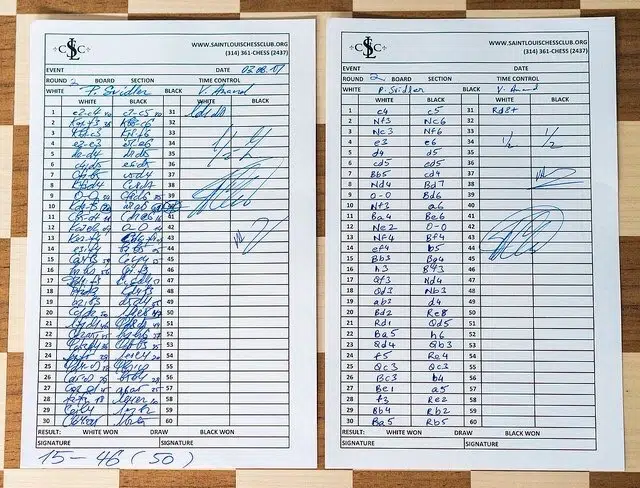
In the above picture, the left scoresheet was written by Peter Svidler and the right scoresheet was was written by Vishwanathan Anand.
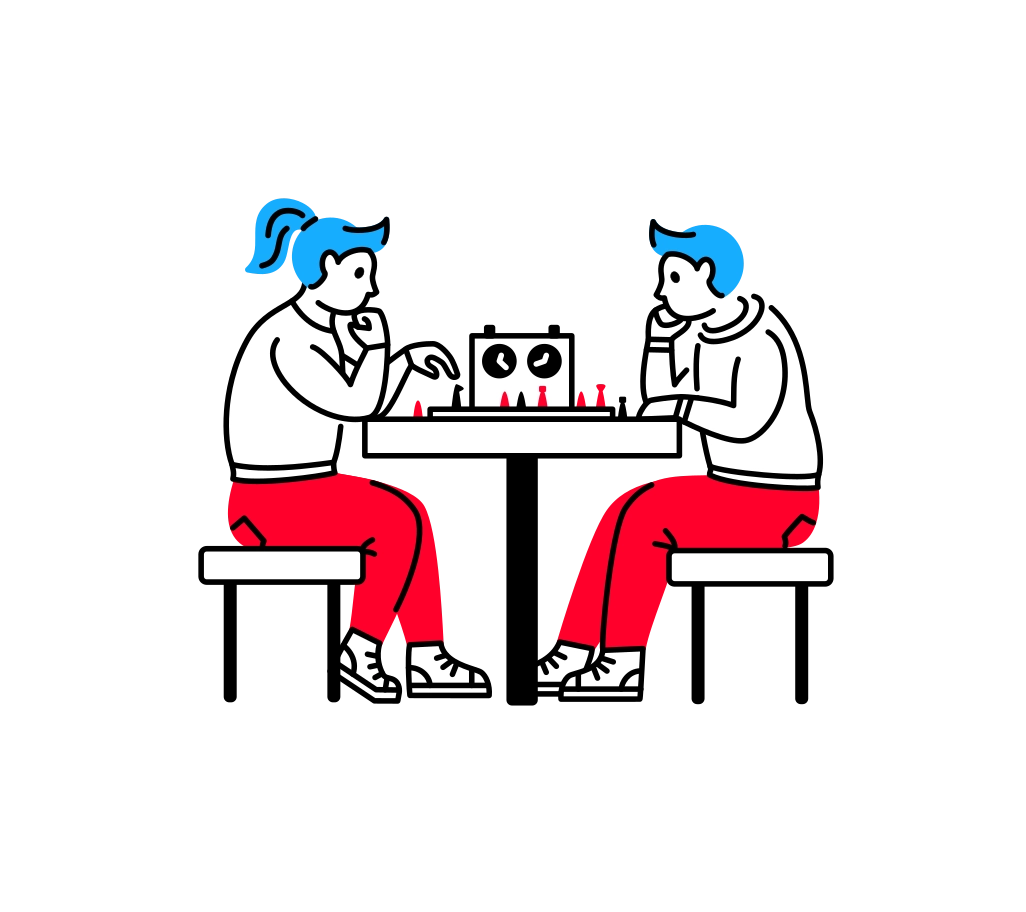

2. Why do Chess Players Write Down Their Moves?
It's Mandatory to Write Down
Moves on the Scoresheet As per the Laws of Chess in the FIDE Handbook, each player is required to record their and the opponent's moves. They must record the moves correctly and legibly on the scoresheet during the course of the game.
Article 8 further says to record the moves in the algebraic notation on the scoresheet prescribed for the chess competitions.
Let me remind you: besides the top-level games, it is also compulsory for any FIDE-rated chess tournaments. If a player isn't able to write by themselves due to any kind of disability or temporary accidents, then they're provided with FIDE-approved assistants.
However, there's an exception to this rule. If the player is left with only 5 minutes on their clocks and doesn't have more than additional 30 seconds per move, then they're exempted from this rule.
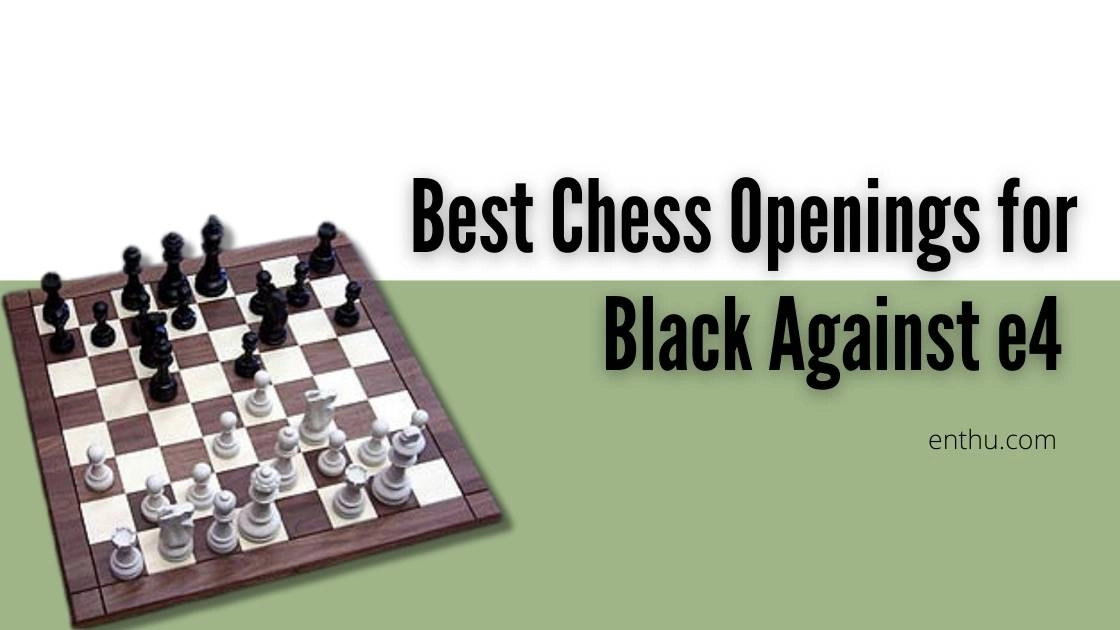
It's a Rule to Sign
Both the Scoresheets by the Players The end of each game is marked completed only after the scoresheets are signed by both the players.
Therefore, if you're new to playing Chess, make it a habit to write down your moves. Trust me; it will only help you track your gaming style but also display areas that you need to improve.
It Supports Your Claims During a game
If you feel your opponent is cheating, you will need the scoresheet to claim your suspicion. Be it a complaint against your enemy player or a draw, you can't claim anything until you show your scoresheet.
In addition to that, chess players write down their moves to keep track of time. In various chess tournaments, the participant is expected to play a certain number of moves within a given time.
On top of that, when a chess player fails to meet the targeted moves, they often face penalties. Dear readers, if you face a situation like this, what would you do? You can always show your scoresheet and prove that you've played the targeted number of moves.
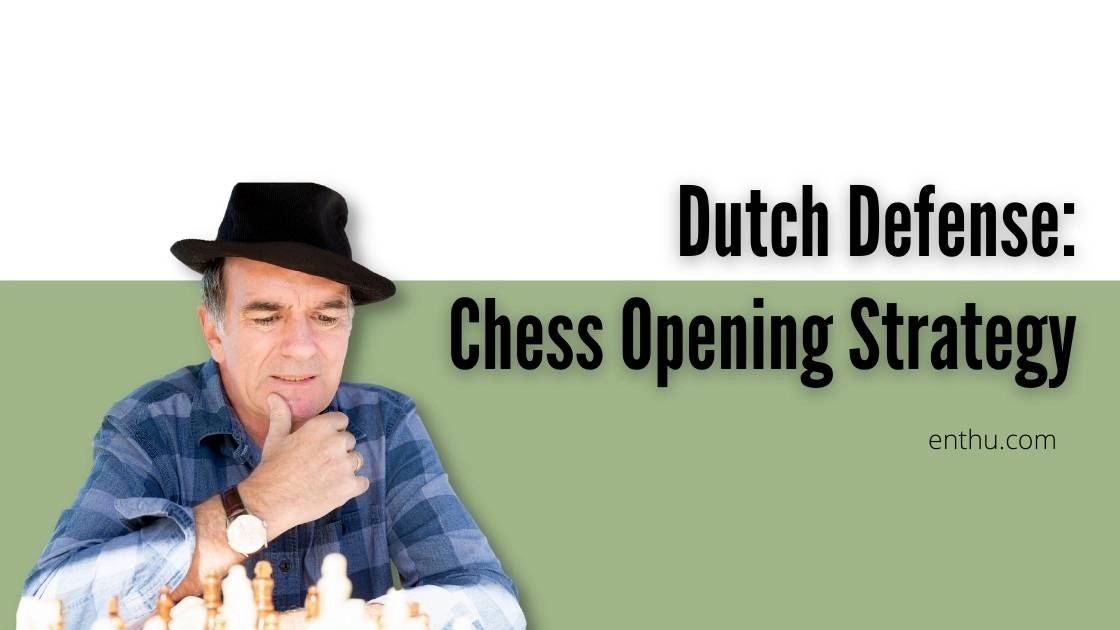
It Helps to Claim
Draws From Stalemate to a mutual agreement, undoubtedly, there are various rules to claim draws in Chess. Amongst all the draw rules and variations, the easiest ones are 3-fold repetition and 50-rule move. All you need is your scoresheet to claim these draws. These're predictable and easy to claim.
What is a Threefold Repetition?
A threefold repetition happens when a position is repeated three times in similar positions within a single game. In such cases, according to article 9.2 of FIDE Laws of Chess, a chess player can claim a draw, but they must prove the threefold repetition by showing their scoresheet.
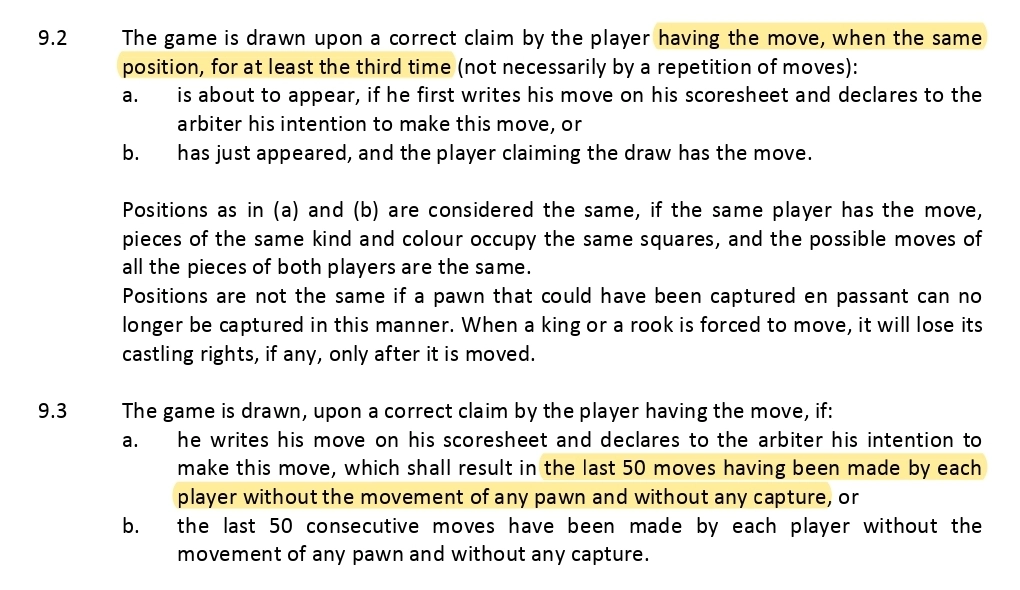
Additional tip
Three moves are considered as threefold repetition only when they follow certain conditions. In every move, all the pieces must have similar power and color, occupying identical squares. Don't forget to claim a draw to the arbiter before giving your move. Also, let me remind you, it's just a draw. It doesn't mean you're winning. Instead, you're requesting a tie.
What is a 50-Move-Rule?
You can claim a 50-move-rule when there's no pawn move or capture in the last 50 moves. To claim a draw with this rule requires a well-written scoresheet. In simple words, a 50 move rule means a player can claim a draw if no pawn movement and no capture has been made in the last 50 moves.
You can inform the arbiter when the 50-move-rule is about to take place, or it has just happened. Either way, the arbiter wouldn't declare anything before checking both the scoresheets.
They will go through the record moves by both the players and then provide a decision based on those documents. Therefore, it's utterly essential to write a neat and clean scoresheet.
3. Writing the Moves Prevents Impulsive Moves
Bobby Fischer said, "Chess is a war over the board. The object is to crush the opponent's mind." I think we all agreed when Fisher called Chess a war. It is a battle, indeed, and the chessboard a battlefield.
Consequently, chess players often end up playing dangerous moves. As a matter of fact, many players lose chess games because of impulsiveness rather than stupidity. While writing down the moves, players get a second or two to think.
These seconds definitely help them to make a better decision and come up with better opening, middle, and endgame strategies.
4. It Helps to Analyze Your Performance
No offense, but it's true that you and I aren't Fischer or Kasparov. So, if Kasparov could spend half of his life studying his styles and learning from others' matches, I suggest you start doing the same.
Writing down your moves on the scoresheet will help you analyze your game better. After the game, you can sit down and study your moves. It will not only help you find out your weakness, but also provide ideas to strengthen your skills.
5. How to Write Moves on Scoresheet?
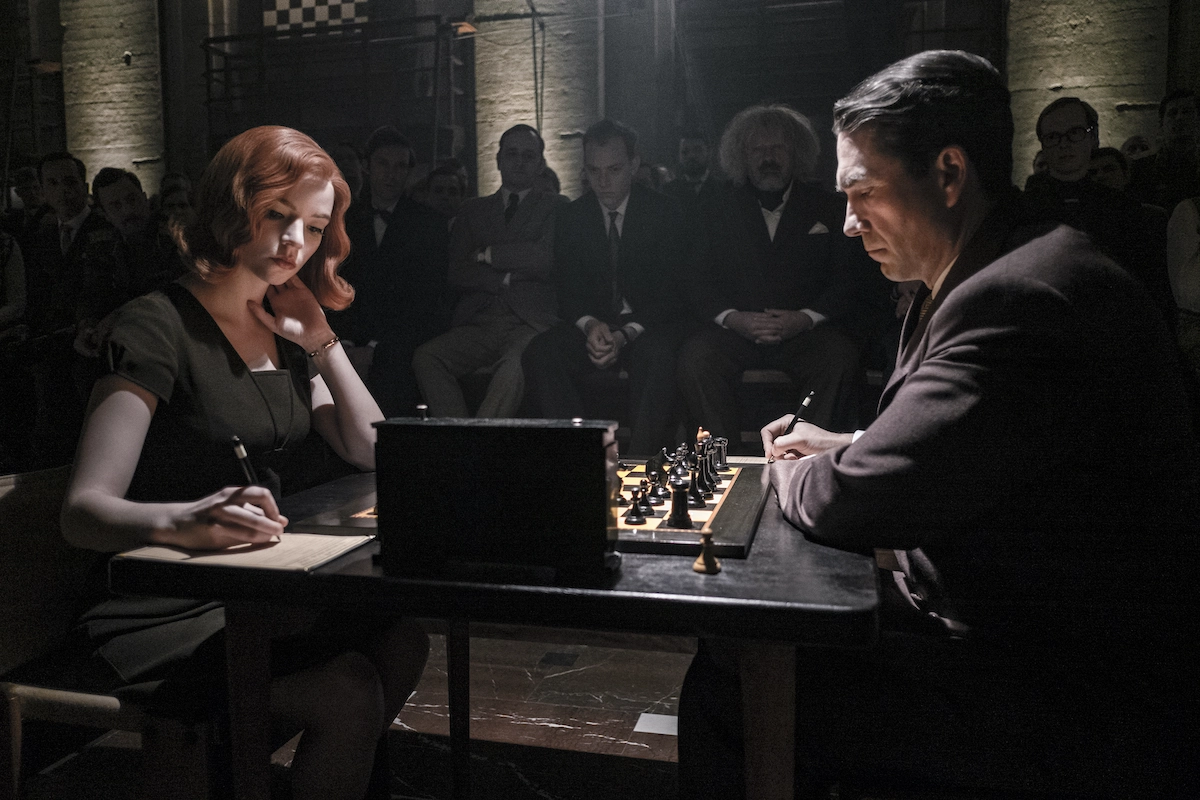
THE QUEEN’S GAMBIT (L to R) ANYA TAYLOR-JOY as BETH HARMON and MARCIN DOROCINSKI as VASILY BORGOV in episode 107 of THE QUEEN’S GAMBIT Cr. PHIL BRAY/NETFLIX © 2020.) According to FIDE rules, the pieces (not pawns) must be indicated by the first letter, such as K=king, Q=queen, R=rook, B=bishop.
Remember, the knight is represented by N=knight, not K. Chess players from non-English countries have the liberty to use the names used in their countries. Players can use different languages, but the rules remain the same—for example, L=loper (Dutch for Bishop).
As stated by FIDE, every move is indicated by the moving piece's first letter of its name and the square of arrival. If a Bishop is moving to e5 square, then the move should be written as Be5. Similarly, when a knight shifts to square f3, then the notation for the move is Nf3.
However, in the case of pawns, no initial letter of the name is included, but only the square of arrival is indicated. So, when you move your pawn to d4, you record the move as d4 on the scoresheet.
A list of essential abbreviations for writing moves as given by FIDE
0 - 0 = castling with rook h1 or rook h8 (kingside castling)
0 - 0 - 0 = castling with rook a1 or rook a8 (queenside castling)
x = captures
+ = check
++ or # = checkmate
e.p. = captures ‘en passante’
Conclusion
Chess players write down their moves because it's mandatory, and it has several perks. Therefore, from Anish Giri to Kasparov, every chess legend and grandmaster writes down their moves during the game.
I recommend every beginner build the habit of writing down their moves. Don't wait till playing in a tournament. Write the moves down side by side even while playing rapid Chess for leisure.
Overall, writing down the moves is a great habit for every chess player. If you're serious about your chess learning, you must make it a habit too.
FAQs
1) How many moves should I plan for in order to win at Chess?
This is a difficult question to answer, as it differs depending on the level of Chess you are playing, your individual playing style, and obviously your opponent's standard.
For beginners, it is usually best to stick to the basics and make fewer but more strategic moves. As you improve, you can begin to take more risks and try more complex strategies.
Ultimately, it is important to be flexible and adapt your play to the situation at hand. Remember: patience is a virtue!
2) How do you reassess your chess game?
Reassessing your chess game can be difficult, but it is important to do so in order to improve. First and foremost, try to write down your moves on a scoresheet.
It will help you to identify your strengths and weaknesses. Next, you should focus on developing new skills and tactics that will help you win more games.
Additionally, you should keep track of your performance and make necessary adjustments based on the results. Finally, stay positive and never give up!
3) How do you write pawn promotion on the scoresheet?
Chess players write the pawn promotion move by adding the first letter of the promoted piece to the move. For instance, the White walked to square c, and now, it's promoted to a Queen.
So, the move is c8Q. Similarly, if the pawns are promoted to Bishop, then the move is c8B. To know more ticks and tips like En Passant, please click



.png)


Comments